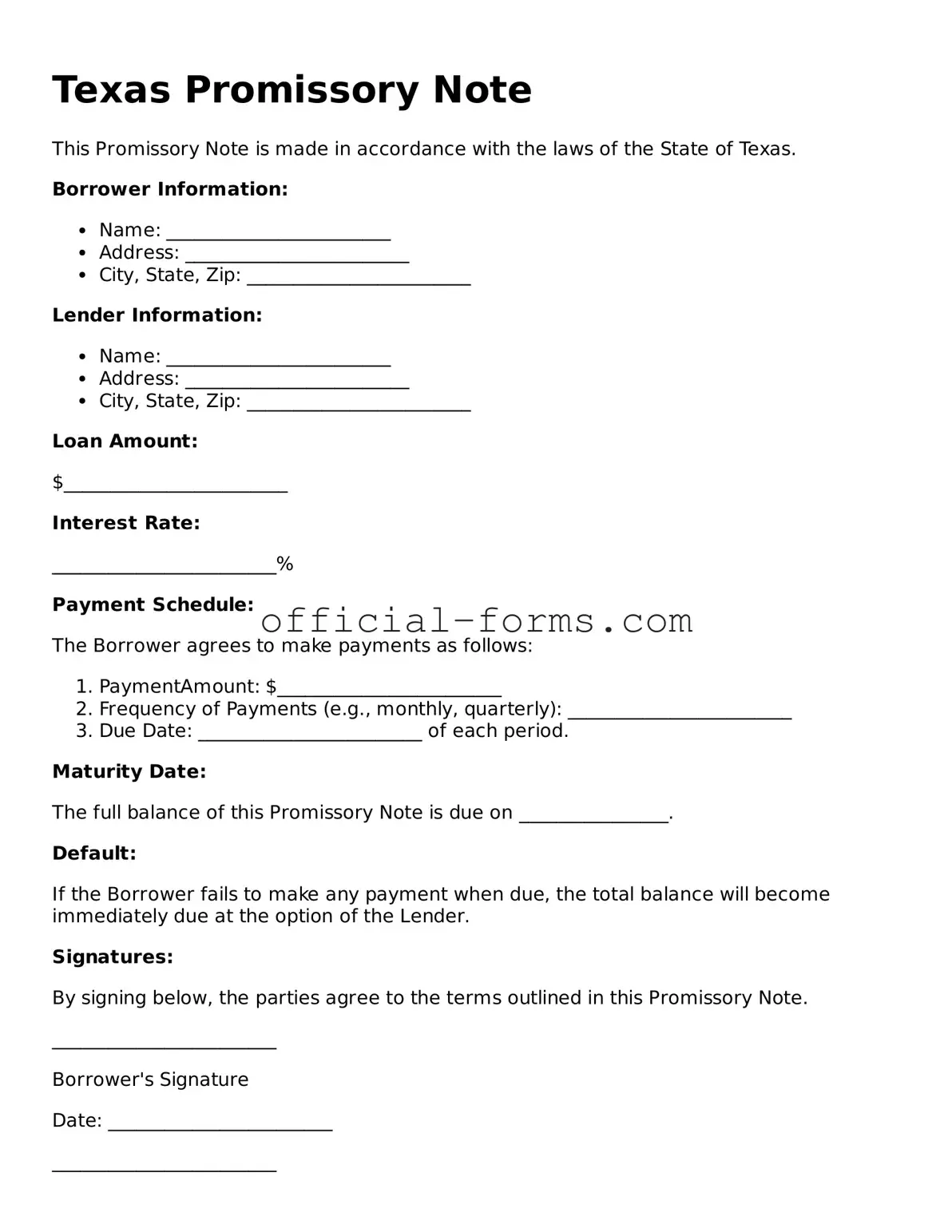When filling out the Texas Promissory Note form, many people make common mistakes that can lead to confusion or legal issues. One frequent error is failing to include all necessary parties. It's essential to clearly identify the borrower and lender. Omitting a party can create complications later on.
Another mistake is not specifying the loan amount. The amount should be clearly stated in both numerical and written form. This helps prevent misunderstandings about how much is owed. If this step is overlooked, it can lead to disputes down the line.
Many individuals also neglect to include the interest rate. The interest rate should be clearly defined. Without it, the note may be considered incomplete, and the terms of repayment could become unclear.
Another common error involves the repayment schedule. Some people forget to outline when payments are due. A clear schedule helps both parties understand their obligations and avoid missed payments.
People often make mistakes with signatures. All required signatures must be present and legible. A missing signature can invalidate the note, so it's crucial to double-check this detail.
In some cases, individuals do not date the document. A date is important for establishing when the agreement was made. Without a date, it can be difficult to determine the timeline of the loan.
Another oversight is failing to include a default clause. This clause outlines what happens if the borrower fails to make payments. Not having this clause can leave both parties unprotected in the event of a default.
Some people also overlook the importance of notarization. While not always required, having the document notarized can provide an extra layer of security. It helps verify the identities of the parties involved.
Lastly, individuals may forget to keep copies of the signed document. Both parties should retain a copy for their records. This ensures that everyone has access to the terms of the agreement if questions arise in the future.
